Shashi Tharoor is former Under Secretary General of the UN and former Minister of State for External Affairs in the Government of India. An award-winning novelist, he is currently a member of the Lok Sabha, India’s parliament.
NEW DELHI – In July, I was among 30 men and women from around the world – government ministers, bureaucrats, technologists, and strategic thinkers – who gathered at the International Telecommunications Union (ITU) in Geneva to discuss how broadband can transform the world for the better. This “Broadband Commission” met under the Chairmanship of Rwanda’s President Paul Kagame and the Mexican communications mogul Carlos Slim.
The ITU, a United Nations body, established the Commission in partnership with UNESCO, and the joint chairmanship was no accident. The UN recognizes that if the information revolution is to advance further, it will take a public-private effort. As ITU Secretary-General Hamadoun Touré has put it, “In the twenty-first century, affordable, ubiquitous broadband networks will be as critical to social and economic prosperity as networks like transport, water, and power.”
The Swiss writer and playwright Max Frisch once dismissed technology as “the art of arranging the world so that we need not experience it.” Today, however, technology is essential to effective participation in our world. And, although mankind cannot live by technology alone, the information revolution has liberated millions of people.
Information is liberating in the traditional political sense of the term: the spread of information has had a direct impact on the degree of accountability and transparency that governments must deliver if they are to survive.
It is also liberating economically. Information technologies are a cost-effective form of capital. Estonia and Costa Rica are well-known examples of how information-access strategies can help accelerate output growth and raise income levels.
Some of the least developed countries, such as Mali and Bangladesh, have shown how determined leadership and innovative approaches can, with international support, connect remote and rural areas to the Internet and mobile telephony, thereby helping to liberate subsistence farmers who were previously tied to local knowledge and local markets. Likewise, mobile networks are delivering health services to the most remote areas of India.
One successful UNESCO initiative is the creation of multipurpose community telecenters throughout the developing world, providing communication and information facilities – phone, fax, Internet, computers, audio-visual equipment – for a wide range of community uses. India’s Unique Identification Number project, under the capable stewardship of information-technology pioneer Nandan Nilekani, will enable access to government, banking, and insurance services at the grass-roots level.
There is no doubt that the Internet can be a democratizing tool. In some parts of the world – and certainly in most of the West – it already is, since large amounts of information are now accessible to almost anyone. But the stark reality of today’s world is that you can tell the rich from the poor by their Internet connections.
Indeed, economic development nowadays requires more than thinking only of the poverty line; one must also think of the high-speed digital line, the fiber-optic line – indeed, all the lines that exclude those who are not plugged into the possibilities of our world.
But the digital divide is no immutable gap. On the contrary, the technology gap between developed and developing countries, measured by levels of penetration by personal computers and information-technology and communications services, has narrowed markedly over the course of the past decade, with rapid growth in mobile phone and Internet use. The average level of Internet and mobile-phone penetration in the rich world in 1997 – 4.1 Internet users and 10.7 mobile phones per 100 inhabitants – was reached in developing countries only five years later.
By contrast, the average level of fixed-line telecommunication penetration in developing countries is nearly 50 years behind the levels of the West. Not surprisingly, it was in Africa – not Europe or America – where the cell phone first overtook the housebound handset. More Africans have become telecommunications users in the last four years than in the entire twentieth century.
The Indian story is even more remarkable. When I left India in 1975 for graduate studies in the United States, the country had roughly 600 million residents and just two million land-line telephones. Today, India holds the world record for the number of cell phones sold in a month –20 million – and for the most telephone connections made in a single month in any country in the history of telecommunications.
The growth in mobile-telephone technology demonstrates that the digital divide is shifting, and the focus of development efforts must change with it. India, for example, has 525 million mobile phone users and fewer than 150 million people with Internet access, so using mobile-phone technology as a tool of e-governance has become vital. This calls for creative means of effecting information transfer and making and receiving official payments by telephone.
Security is a key area of concern today in e-governance – both physical security, in an age of terrorism, and cyber security. Using technology to deliver security will become even more important in areas such as information sharing, disaster management, and data-privacy standards.
Information and communications technology is a powerful tool to address underdevelopment, isolation, poverty, and the lack of political accountability and political freedom. But people need access first and foremost. High-speed broadband Internet access can improve everything from transport management, environmental protection, and emergency services to health care, distance education, and agricultural productivity. Delivering these benefits to ever more people will require resources, international cooperation, and political will.



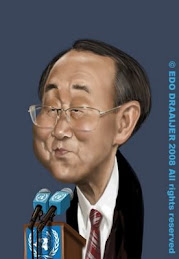

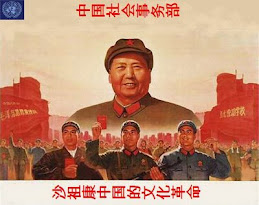










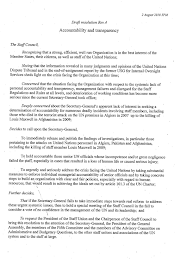

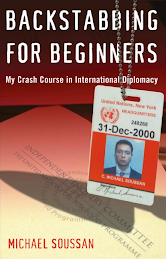
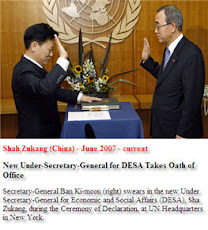
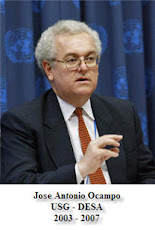
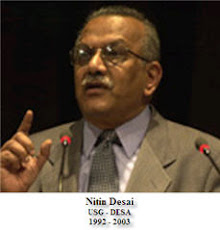
No comments:
Post a Comment